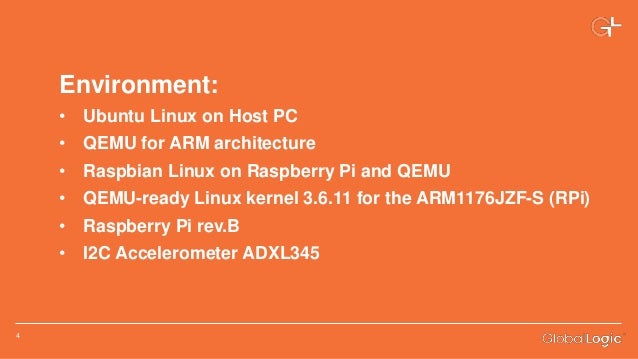In the latest release notes, I saw that Qemu can now run OS X!
dmesg
The QEMU emulator supports both guest images that require full virtualization and guest images that require paravirtualization technologies like virtio. The emulator passes a device tree blob to a guest kernel to describe the guest hardware. When running a non-x86 image on an x86 host, QEMU will JIT the non-x86 code into x86 code. But major efforts in a Google-sponsored Summer of Code event from 2015 brought QEMU's own PowerPC support even further. At the time of writing, Mac OS 9.0 to 10.4 boots and installs, note 1 but versions before and after do not work (like 10.5 and 8.5). Cemu - Wii U Emulator. Experimental software to emulate Wii U applications on PC. System requirements. Windows 7 (x64) or above OpenGL 4.5 or Vulkan 1.1 RAM: 4 GB minimum, 8 GB or more recommended Microsoft Visual C 2017 X64 Redistributable: vcredist.x64.exe. Graphic card compatibility.
The installer for 10.4 will run, but it’ll then freak out saying that this model of mac is not supported. The ‘working’ cli I’m using is:
ppc-softmmu/qemu-system-ppc -L pc-bios/ -m 256 -M g3beige -hda osx1046.vmdk -cpu G3 -cdrom Mac OS X Install DVD.toast -boot d
Sure the colours are off, and it is kind of pokey, but still the more guest OS’s on Qemu, namely for something like the PowerPC. If anyone has any better idea of how to fully run OS X on Qemu drop me a note! Plus there is additional information on the mailing list.
This page applies to version 2.8 of QEMU.
This page applies to version 9.2.1 of Mac OS, an obsolete version.
- You will want to refer to the wiki's PowerPC information as it contains potentially newer information beyond this article.
Before macOS, Apple sold Macintoshes with an operating system called System Software throughout its early lifespan, but the name only changed to Mac OS until version 8 in 1997. These operating systems are collectively referred to as Classic Mac OS. It was succeeded by Mac OS X, which targeted PowerPC Macs until the rollover to x86 in 2006, in which releases were shortened to OS X. Today, the modern incarnation is known as macOS. The design of the Macintosh computers changed throughout its life; the first Macintoshes were built with Motorola 68k processors but by version 9, PowerPC Macs were commonplace. This happened again with x86.
Mac emulation became possible in 1998 starting with the release of SheepShaver and its competitor PearPC in 2004, cross-platform emulators aiming to emulate PowerPC on x86 specifically. Development on PearPC paused between 2005 and 2011 while it encountered controversy with CherryOS, and the latest release was in 2015. But major efforts in a Google-sponsored Summer of Code event from 2015 brought QEMU's own PowerPC support even further. At the time of writing, Mac OS 9.0 to 10.4 boots and installs,[note 1] but versions before and after do not work (like 10.5 and 8.5).

Note that virtualization has always been a gray area for Apple. Until Mac OS X Lion, Apple licensed the software so that it was only permitted to be used with Mac hardware. They've since loosened up a bit to allow virtualization of macOS on Mac hardware, but anything else muddys the water.
Preparing the machine[edit]
You will need to get a copy of the Mac OS 9 installation CD. Booting the setup will go straight to a live environment with the option to install Mac OS 9.
It's recommended to rip the CD to the computer as an ISO. The -cdrom flag may not support hardware devices on platforms other than Linux.
You will need to create a hard disk image so that Mac OS 9 can be installed. 1 GB is recommended though it can be larger if desired. To set it as one gigabyte, use 1G. QEMU will then create a new hard disk image.
Starting up[edit]
Qemu Os X
- Note: If your version of QEMU only compiled the i386 and x86_64 programs, you will need to recompile.
OpenBIOS may not be included, so you'll need that too.
Go to the terminal and type:
256 MB of memory is recommended. Press enter and Mac OS 9 will boot from the disk.
The installer does not automatically format the drive for installation (commonly referred to as initialization). We'll need to do it ourselves instead. Open the Utilities folder on the disc, and open 'Drive Setup'. In the program, click the drive that says <not initialized> and then click 'Initialize...'. By default, the installer is set to create one partition. You can choose 'Custom Setup...' if you want something different, but because this guide is focused on purely installing Mac OS 9, we'll choose Initialize. Quit the program by going to File > Quit. Close the Utilities folder (the left-most button at the top) and then open Mac OS Install.
Press Continue on the Welcome screen, and then press Select on the Destination screen (you can go back and set 'Perform Clean Installation' in the Options if you want). Press Continue on the Important Information screen, and then Continue and Agree on the License Agreement. On the next screen, you'll be given the chance to set some options (like creating a report of the install) as well as customizing which programs get added and which don't. After that, the install will begin.
Once it completes, you can press Quit and then shut down. From that point on, you can use this command to get the VM running:
Notes[edit]
- ↑According to this spreadsheet, some versions still have issues; for one, 9.0 requires specific versions of the installation media, and movement from the mouse to boot from the hard drive, and second, 10.2 has graphical issues opening the hard drive on the desktop.
Install Qemu On Mac

